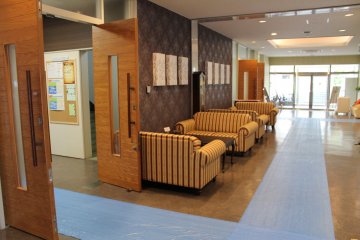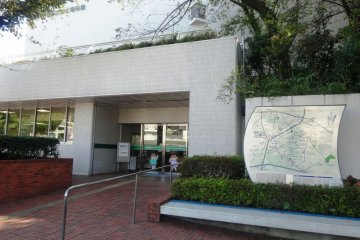The Ota City Folk Museum offers a host of exhibits related to the physical and cultural history of Ota Ward. On the ground floor, take a journey back in time to the early traces of settlement in the area, with pottery shards and other recovered artifacts. A floor map details the location and role of Ota’s irrigation system, while a display of costumes related to centuries-old rain dances brightens up a nearby corner. A large kite looms over the entire room, a colorful inclusion that represents one of Ota’s local festivals.
On the second floor, a large portion of the exhibits is dedicated to the writers who used to live in Ota Ward in the late Showa and early Taisho Periods, earning the neighborhood the moniker of Magome Writers’ Village. Biographies of the writers and copies of some of their more notable works are on display, as well as a handful of dioramas of the writers’ residences. Nearby, visitors can get a hands-on look at the living room of a neighborhood home during the Showa Period. The room next door showcases the importance of nori cultivation in Ota. The neighborhood once counted itself among Japan’s major producers of dried seaweed. The displays end with a showcase of Ota Ward’s modern manufacturing industry and a special corner on Haneda Airport.
On occasion, the museum holds special exhibitions, ranging from archaeological discoveries to famous woodblock artists who have ties to the local neighborhood.
Entrance to the museum is free and an English brochure is available.










